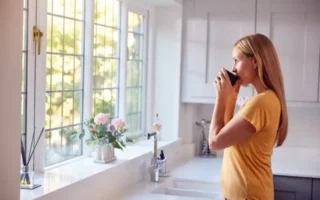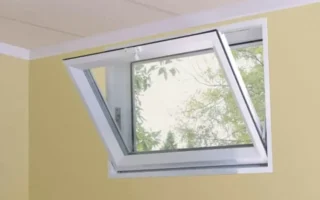Glass windows have become a hallmark of modern architecture, blending beauty and functionality in remarkable ways. Their ability to invite natural light indoors transforms spaces, creating an airy atmosphere that enhances the overall aesthetic.
The variety of glass types allows for creative freedom. Whether it’s clear glass for unobstructed views or frosted options for privacy without sacrificing brightness, architects harness these materials to push boundaries and innovate designs that are visually appealing and energy-efficient.
Advancements in manufacturing techniques ensure that glass windows can withstand various environmental factors while providing excellent insulation. This adaptability makes them suitable for residential properties as well as commercial buildings.
Maintenance and potential vulnerabilities are considered, but the advantages often outweigh these drawbacks. The elegance of large panes framing outdoor scenes adds character to any structure.
Types of glass used for windows

Regarding glass windows, several types cater to different needs and preferences. Float glass is the most common choice. It’s smooth and clear, making it perfect for residential homes.
Next up is tempered glass, known for its strength. This type undergoes a heating process that makes it much tougher than standard options, ideal for areas prone to temperature fluctuations.
Laminated glass is another popular option. It comprises two or more layers bonded with an interlayer, providing better sound insulation and added safety.
Low-E (low emissivity) glass offers energy efficiency by reflecting heat indoors during winter while keeping out unwanted heat in summer.
Frosted or etched glass adds privacy without sacrificing light. Its decorative finish can elevate any architectural design beautifully.
The process of making glass windows
The process of making glass windows begins with raw materials. The primary components are silica sand, soda ash, and limestone, which are carefully mixed in precise proportions.
Next comes the melting phase. The mixture is heated to extreme temperatures in a furnace, transforming into molten glass. This step requires careful monitoring to achieve the right consistency.
Once melted, the glass is shaped using various methods. Flat windows are often floated on molten tin to create smooth surfaces, a technique called float glass production.
After shaping, cooling becomes essential. Controlled cooling helps prevent stresses within the material that could lead to breakage later on.
Cutting occurs with precision tools designed for accuracy and safety. Each piece is measured meticulously before being separated from larger sheets of glass that are ready for installation as windows in buildings or vehicles.
Different techniques and methods of shaping and cutting glass

Shaping and cutting glass is an art form that requires precision and skill. Several techniques are used by artisans to create stunning designs.
The most common method involves scoring the surface with a glass cutter. This tool creates a shallow groove, allowing the glass to break cleanly along the line. It’s simple yet effective for straight cuts.
Diamond blades are used for intricate shapes. These specialized saws can easily navigate curves and angles, enabling detailed artistry in window design.
Another fascinating technique is sandblasting. Artists direct high-pressure sand at the glass surface to achieve frosted effects or patterns that add depth and character.
Water jet cutting effortlessly has gained popularity with glass panesigh-pressure water mixed with abrasives to slice through thick panes of glass effortlessly while ensuring smooth edges.
Tempering and strengthening glass for use in windows
Tempering glass involves heating it to high temperatures, followed by rapid cooling. This process significantly enhances its strength and durability, resulting in a material that can withstand stress better than standard glass.
This method also helps minimize the risk of shattering. When tempered glass does break, it fractures into small, blunt pieces rather than sharp shards. This safety feature makes it an excellent choice for windows in both residential and commercial settings.
Another technique used to strengthen glass is lamination. In this process, glass layers are bonded with an interlayer material. Both methods ensure that your windows remain resilient against environmental factors like wind pressure or impact from hailstones. Choosing the right type of strengthened glass can enhance safety without compromising aesthetics in modern architecture.
Installation and maintenance of glass windows

Installing glass windows requires precision and care. First, the frame must be adequately prepared. This involves ensuring the structure is square and level to avoid complications later.
Once the frame is ready, positioning the glass correctly is crucial. You shouldn’t have to force it into place. It should fit snugly. Proper sealing around the edges prevents air leaks and water intrusion.
Maintenance plays a significant role in extending a window’s lifespan. Regular cleaning helps maintain clarity and aesthetics. Avoid scratching the surface by using gentle solutions.
Inspecting seals periodically can prevent drafts or moisture buildup between panes. Addressing minor issues promptly can save time and money on repairs.
For those who prefer a hands-off approach, hiring professionals for installation and maintenance ensures optimal performance while safeguarding your investment in these beautiful features of modern architecture.
Advantages and disadvantages of using glass windows
Glass windows bring a unique charm and elegance to any building. They allow natural light to flood in, creating an airy and open atmosphere, which can significantly reduce the need for artificial lighting during the day.
They also have drawbacks. Glass is less insulating than other materials, leading to potential energy inefficiencies. In colder climates, this can mean higher heating costs.
Another consideration is safety. While modern glass technology has improved strength and durability, it remains susceptible to breakage under certain conditions.
Conversely, advancements like tempered or laminated glass offer enhanced protection against shattering but may increase installation costs.
Privacy can be another concern; transparent windows expose interiors unless treated with frosting or reflective coatings. Understanding these factors helps make informed design choices for aesthetics and functionality.




